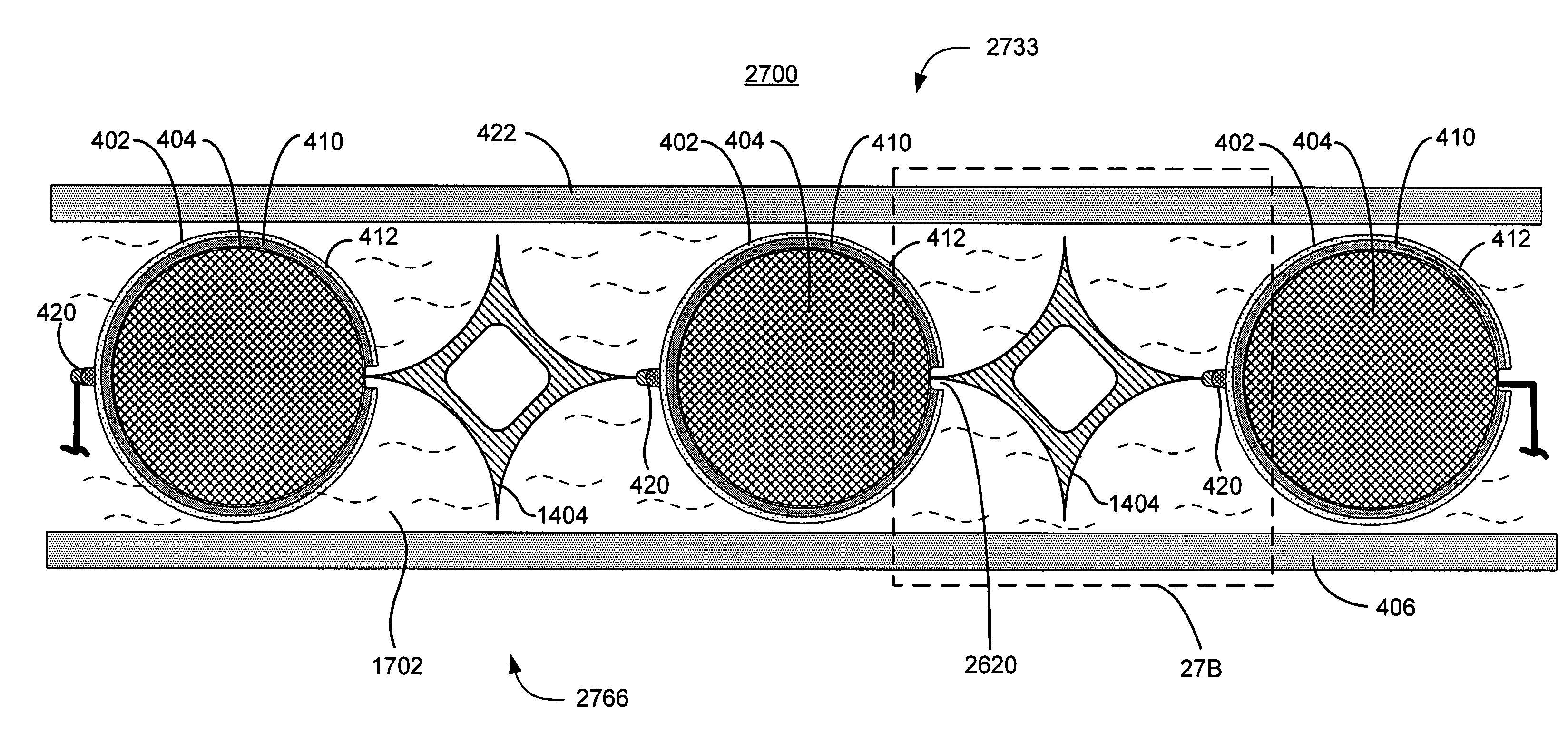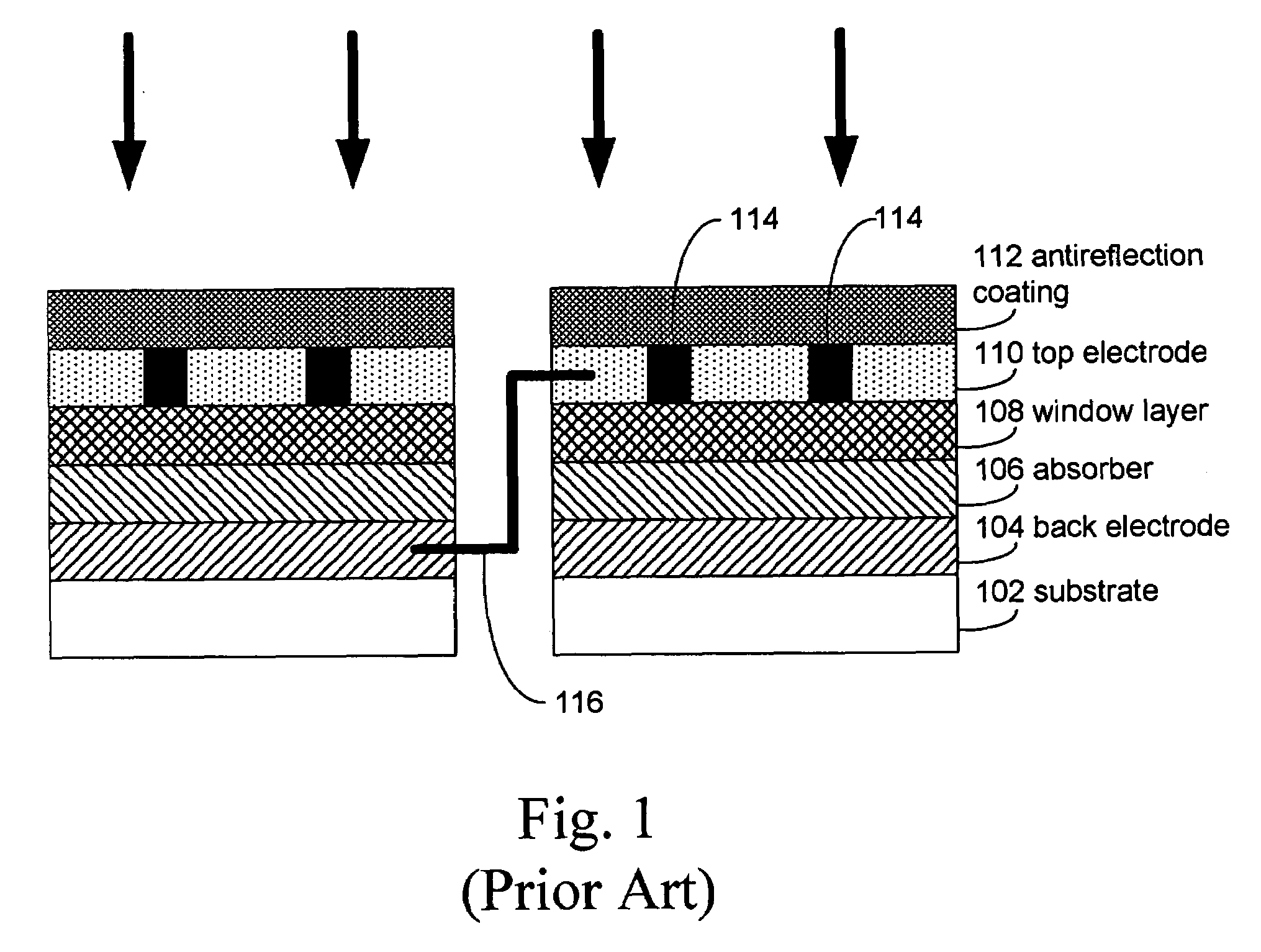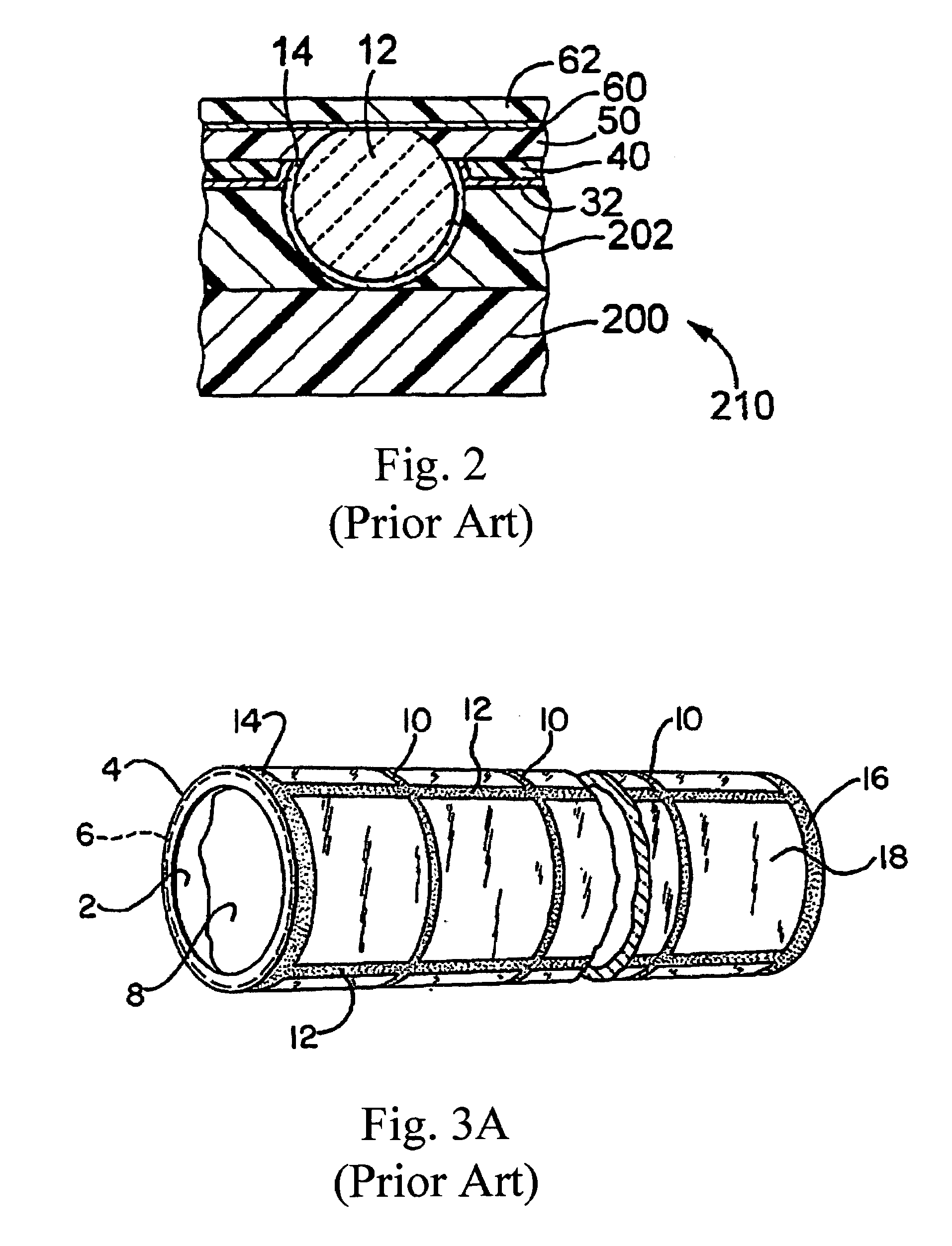Interconnects for solar cell devices
a solar cell and solar cell technology, applied in the field of solar cell assemblies, can solve the problems of reducing the efficiency of increasing the occurrence of pinholes and similar flaws in larger planar solar cells, and increasing the cost of making crystalline silicon-based cells
- Summary
- Abstract
- Description
- Claims
- Application Information
AI Technical Summary
Benefits of technology
Problems solved by technology
Method used
Image
Examples
Embodiment Construction
[0079]Disclosed herein are solar cell assemblies for converting solar energy into electrical energy and more particularly to improved solar cells and solar cell arrays. The solar cells of the present invention have a wire shape and are arranged in parallel but are electrically connected in series.
5.1 Basic Structure
[0080]The present invention provides a solar cell assembly 400 in which elongated solar cells 402, shown in cross-section in FIG. 4A, serve to absorb light. A conductive core (elongated conductive core) 404 serves as the first electrode in the assembly and a transparent conductive oxide (TCO) 412 on the exterior surface of each solar cell serves as the counter-electrode.
[0081]In general, conductive core 404 is made out of any material such that it can support the photovoltaic current generated by the solar cell with negligible resistive losses. In some embodiments, conductive core 404 is composed of any conductive material, such as aluminum, molybdenum, titanium, steel, n...
PUM
 Login to View More
Login to View More Abstract
Description
Claims
Application Information
 Login to View More
Login to View More - R&D
- Intellectual Property
- Life Sciences
- Materials
- Tech Scout
- Unparalleled Data Quality
- Higher Quality Content
- 60% Fewer Hallucinations
Browse by: Latest US Patents, China's latest patents, Technical Efficacy Thesaurus, Application Domain, Technology Topic, Popular Technical Reports.
© 2025 PatSnap. All rights reserved.Legal|Privacy policy|Modern Slavery Act Transparency Statement|Sitemap|About US| Contact US: help@patsnap.com



